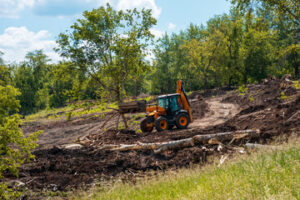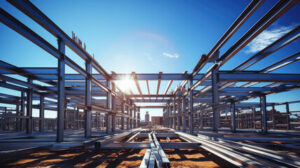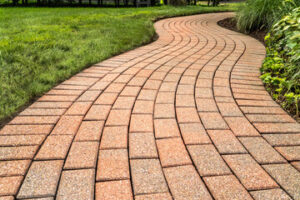Cleanout services help families manage estates after a death or divorce. They also assist with downsizing to a new home or clearing a foreclosure sale. Their expertise and efficiency are critical in facilitating these stressful processes.

Your homes sewer cleanout looks like a capped pipe near the edge of your house or yard. It should be easily accessible for maintenance & inspection. Keep it clear of bushes or other landscaping elements & regularly check that the cap is securely sealed. Contact Always Recovering Junk LLC for professional help.
A reliable property cleanout service not only clears out clutter, but also breathes new life into spaces. They help properties serve their intended purposes, whether it’s a residential home, an office, or a warehouse. A well-planned property cleanout can increase efficiency and productivity, while reducing stress and boosting morale.
The best cleanout services offer a wide range of options that cater to different needs and circumstances. Some specialize in specific situations, such as hoarding and estate clearance, while others are more general and provide comprehensive services for homes and offices. When selecting a cleanout service, look for one that offers comprehensive services at a competitive price. This will save you time and money, while ensuring that your property is properly cleaned and cared for.
Every cleanout scenario is unique, and it requires a customized approach to meet its demands. For instance, hoarding situations require sensitivity and thorough strategy, while estate clearances often involve items of sentimental value. Therefore, it’s essential to select a reputable junk removal company that has the experience and expertise to handle such complexities.
Besides disposing of unwanted items, the cleanout team also sanitizes the space, eliminating potential health and safety hazards. This way, the space is safe for the occupants and visitors. Moreover, the sanitized space enhances the appearance of the property and increases its overall value.
In addition to the aforementioned benefits, cleanout services can reduce waste and promote sustainability by recycling or donating unnecessary items. This is especially important in warehouse cleanouts, where it’s crucial to adhere to local laws. The dependable junk removal and warehouse cleanout services in NJ will follow strict disposal guidelines to prevent environmental pollution.
A quality cleanout service is not only reliable, but they also offer affordable and transparent pricing. They will clearly explain any potential charges upfront and provide detailed quotes to avoid any surprises. They will also provide a breakdown of the materials that will be recycled or donated, making it easier for clients to make informed decisions. In addition, they will take care of the entire cleanout process from start to finish, so that you can focus on your other priorities.
Transparency
Whether it’s dealing with the death of a loved one, moving out after an eviction or foreclosure, or working through hoarding, some situations require sensitivity and expertise that professional cleanout services can provide. A professional cleanout service assesses the scope of work, organizes and executes the removal of unwanted items from a property, then arranges for appropriate recycling, donation, or disposal. This process helps ease the stress of a major life transition for those involved, while also protecting them from unsafe, hazardous, or unsanitary conditions.
Property cleanouts aren’t just about tidying up; they’re a transformative experience that breathes new life into spaces. They help to create a more functional environment and can contribute to higher perceived value for homes and commercial properties. They also promote a sense of purpose and community, supporting eco-friendly practices and fostering sustainable waste management.
A professional cleanout service is a valuable investment for any homeowner, from time-savings to increased property value. In addition, it provides a safe and efficient alternative to tackling a project on your own, reducing physical and emotional strain for families during a difficult time. Estate cleanouts, for example, can be extremely overwhelming and emotional, especially when the family is grieving for a lost loved one. Professionals can assist with sorting, donating, or selling items, allowing the family to focus on important decisions while also saving valuable time and resources.
While DIY junk removal is an option, it can be expensive and labor-intensive, and not always the most environmentally responsible choice. A professional cleanout service is able to assess the needs of each situation, streamline the process, and ensure that all unwanted items are handled safely, responsibly, and according to local regulations.
Many cleanout services prioritize environmental responsibility, utilizing sustainable disposal and recycling strategies to minimize waste and promote community support. They also offer donation options for usable items, allowing clients to make a positive impact on the lives of others while helping to declutter their homes or offices. These efforts reflect a growing commitment to efficiency and sustainability in a world that is increasingly cluttered and overwhelmed with unnecessary items.
Comprehensive offerings
A quality cleanout service offers a comprehensive approach to sorting through and removing items from properties. They provide support for emotional and logistical issues that are often overwhelming for families. This support can be essential in a variety of circumstances, including the death of a loved one, downsizing, or property sale preparations. They can also help you determine the best way to sell or donate valuable belongings.
They can help you identify items that are of sentimental or financial value and ensure they receive special treatment during the cleanout process. These items can include heirlooms, family mementos, important documents, and personal keepsakes. During the cleanout process, it is important to clearly communicate these items with your service provider and make sure they are kept safe and secured from harm.
Professional removal services can also take care of donation and disposal logistics, ensuring that usable items are diverted from landfills. This helps the environment and provides a second life to items that may otherwise be discarded. This approach is especially helpful for estate cleanouts, where many items are donated to charity and can make a significant impact on the community. In addition, these services can help you prepare for an estate sale by providing expert appraisals and sales advice.
Experience
Whether you’re dealing with the death of a loved one, going through divorce, or preparing to move out, estate cleanout services help make these stressful events as smooth and efficient as possible. Dedicated professionals handle the logistical details and emotional toll, including locating items, determining their value, and arranging sales or donation logistics. This allows you to focus on the next step of your life without being overwhelmed by the task at hand.
A quality cleanout service should be able to handle both residential and commercial properties, from large homes to small apartments. They have the expertise to ensure all your items are properly disposed of or donated, and can even provide recycling bins for your convenience. They also know how to navigate complex plumbing systems and have a strong working knowledge of local city ordinances.
Few things are more frustrating for homeowners than a drawn-out plumbing complication, which can leave your home in disarray. A cleanout lets plumbers access potential issues directly, cutting down on time and inconvenience. A cleanout can be located outside your property, near the foundation or water meter, or in the basement of your home. It’s usually a capped pipe segment that’s clearly marked with “sewer” to distinguish it from other pipes in your system.
It’s important to regularly check and maintain your cleanout to avoid clogs and other problems, especially during colder months when waste flows more frequently. The best way to do so is by ensuring that the cap is tightly sealed, keeping tree roots and foliage away from it, and repairing any cracks or damage to the pipe.
A top-notch cleanout service will also have a clear pricing structure that is straightforward and easy to understand. This will eliminate any surprises and prevent you from overpaying for service. The company’s team should be friendly and professional, as well as knowledgeable about local city ordinances and disposal guidelines. They’ll be able to answer any questions you may have about the process and will work quickly to get the job done. Their punctuality and reliability will ensure your cleanout project goes smoothly, whether you’re preparing a house for sale or managing a renovation.








